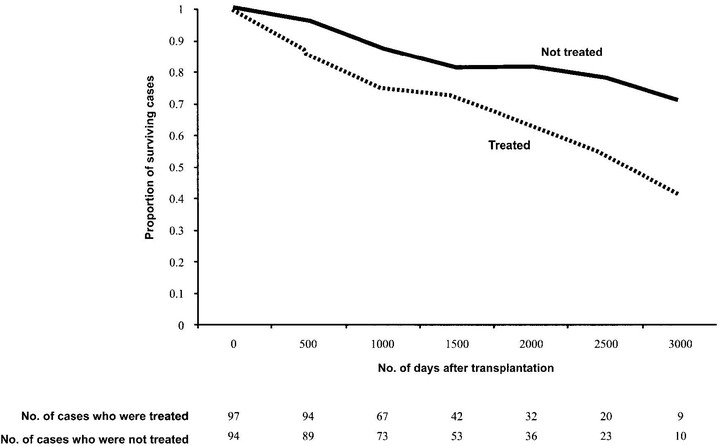
Abstract
BACKGROUND: The epidemiology of candiduria in renal transplantation is unknown. METHODS: We performed a nested case-control study to evaluate the epidemiology of candiduria in renal transplant recipients at the University of Wisconsin (Madison) over an 8-year period. RESULTS: Renal transplantations were performed on 1738 patients during this period, 192 of whom had 276 episodes of candiduria. Candida glabrata, which was recovered from 98 (51%) of 192 case patients, was the most common pathogen identified. Most case patients were asymptomatic. Independent predictors of candiduria were female sex (odds ratio [OR], 12.5; 95% confidence interval [CI], 6.7-23.0), intensive care unit admission (OR, 8.8; 95% CI, 2.3-35.0), antibiotic use during the month before candiduria (OR, 3.8; 95% CI, 1.7-8.3), presence of an indwelling bladder catheter (OR, 4.4; 95% CI, 2.1-9.4), diabetes (OR, 2.2; 95% CI, 1.3-3.9), neurogenic bladder (OR, 7.6; 95% CI, 2.1-27), and malnutrition (OR, 2.4; 95% CI, 1.3-4.4). Log-rank testing of Kaplan-Meier curves revealed that 60-day, 90-day, and cumulative survival rates were significantly different between case and control patients; there was no difference in the survival rate during the first 30 days after transplantation. A variety of regimens were used for treatment; 119 case patients (62%) underwent removal of the indwelling bladder catheter within 1 week after diagnosis of candiduria. Candiduria cleared in 148 case patients (77%). Treatment of candiduria was not associated with an improved survival rate. CONCLUSIONS: Candiduria occurs commonly in renal transplant recipients. Risk factors for candiduria in such persons are similar to those in hospitalized patients who have not received a transplant. Candiduria is associated with reduced survival rates among persons who have undergone renal transplantation; this is likely a marker for severity of illness. Treatment of asymptomatic candiduria in renal transplant recipients does not appear to result in improved outcome.